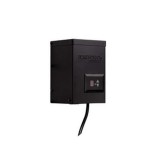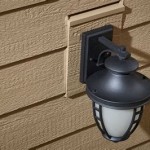How to Protect Your Outdoor Plants in Winter
Winter can be a harsh time for outdoor plants, with freezing temperatures, snow, and ice posing significant threats to their survival. However, with proper preparation and care, it is possible to ensure your plants thrive even during the coldest months. This article will explore practical strategies to safeguard your outdoor plants from winter's elements, enabling them to emerge healthy and vibrant in springtime.
Mulching for Insulation and Moisture Retention
One of the most effective ways to protect plants from winter's chill is by applying a protective layer of mulch. Mulch acts as an insulator, shielding the soil from extreme temperature fluctuations and preventing it from freezing too deeply. It also helps retain moisture, which is crucial for plants during the dormant season.
When selecting mulch, consider its composition and thickness. Organic mulches, such as wood chips, shredded bark, or straw, are ideal as they decompose over time, enriching the soil. Ensure the mulch layer is thick enough to provide adequate insulation, typically around 2-4 inches deep.
Before applying mulch, clear any debris or weeds from around the base of the plants. This will prevent pests and diseases from taking hold. Mulch should be applied evenly around the plants, leaving a small space between the mulch and the stems to avoid stem rot.
Protecting from Wind and Sun
Strong winds can desiccate plants, especially during winter when the ground is frozen and they cannot readily absorb water. Additionally, prolonged exposure to intense winter sunshine can damage foliage and lead to dehydration. It is essential to shield plants from these harsh conditions.
One method is to construct windbreaks using materials like burlap, snow fencing, or even evergreen trees. These barriers will create a protective buffer, reducing the wind's impact on your plants. In areas with harsh sunlight, you can create shade using tarps, burlap, or other suitable coverings. These will help mitigate the effects of intense winter sun.
Another effective technique is to position plants in sheltered locations. Choose spots near walls or buildings that provide some protection from the wind and sun. Remember to consider the direction of prevailing winds in your area when choosing a location for your plants.
Watering and Winterizing
While plants may appear dormant in winter, they still require some moisture, especially during periods of thaw. However, overwatering can lead to root rot, so it is crucial to water sparingly. Water thoroughly but only when the soil is dry to the touch.
For plants that are not hardy in your region, it may be necessary to winterize them. This usually involves bringing them indoors, to a greenhouse, or to a more protected location. Plants that are not winter-hardy will be damaged or killed by frost and below-freezing temperatures. Before bringing them indoors, prune any dead leaves or damaged branches and inspect for pests.
In addition to providing insulation and water, there are other essential winterizing practices. Pruning trees and shrubs can help reduce their susceptibility to damage from heavy snow and ice accumulation. It is also essential to clear any snow or ice that accumulates on plants, as this weight can cause branches to break.
Monitoring for Pests and Diseases
While winter may seem like a time for plants to rest, pests and diseases can still be active. Keep an eye out for signs of insect damage, such as webbing, holes in leaves, or unusual discoloration. Also, check for fungal diseases, which commonly appear during humid or wet periods. If you notice any issues, address them promptly to prevent them from spreading.
To avoid pest problems during the winter months, ensure that fallen leaves and other plant debris are removed from around your plants. Pests can overwinter in these materials and emerge in the spring to attack your plants. Additionally, consider applying insecticidal soap or other organic pest control methods to prevent infestations.

How To Protect Your Plants Indoor And Outside In Winter Marin Independent Journal

How To Protect Your Garden From Frost And Freezing Temps Southern Living Plants

5 Ways To Protect Your Garden This Winter

The 5 Best Ways To Protect Your Plants From Cold Jobe S

Practical Tips For Covering Plants In Winter Do I Need To Jay Scotts Collection

5 Ways To Protect Your Garden This Winter

Protect Your Garden Plants In Winter Buckerfield S Bc Original Country

5 Ways To Protect Your Garden This Winter

6 Ways To Protect Plants From Frost

Freeze Warning Tonight The Correct Way To Save Your Plants







